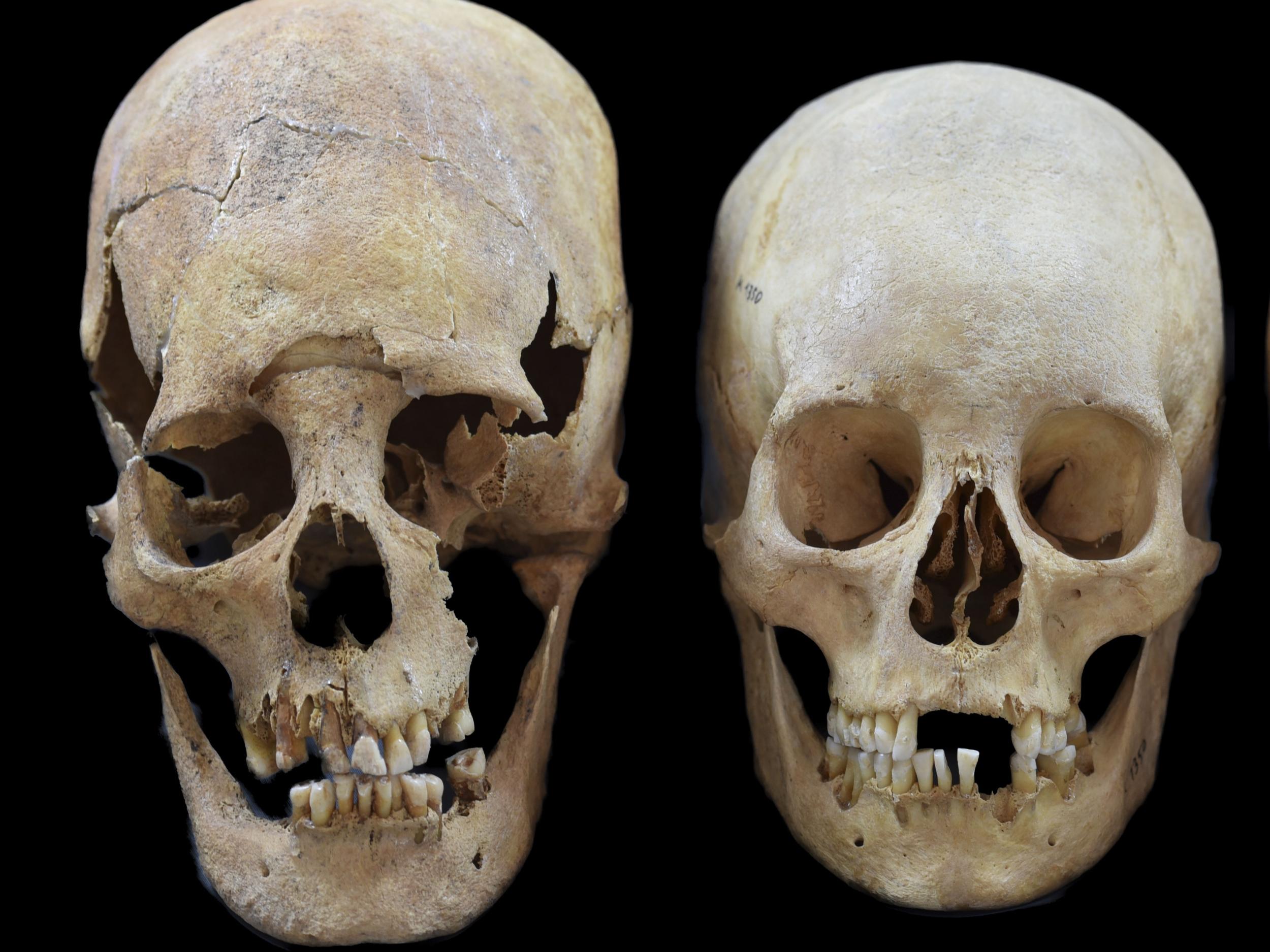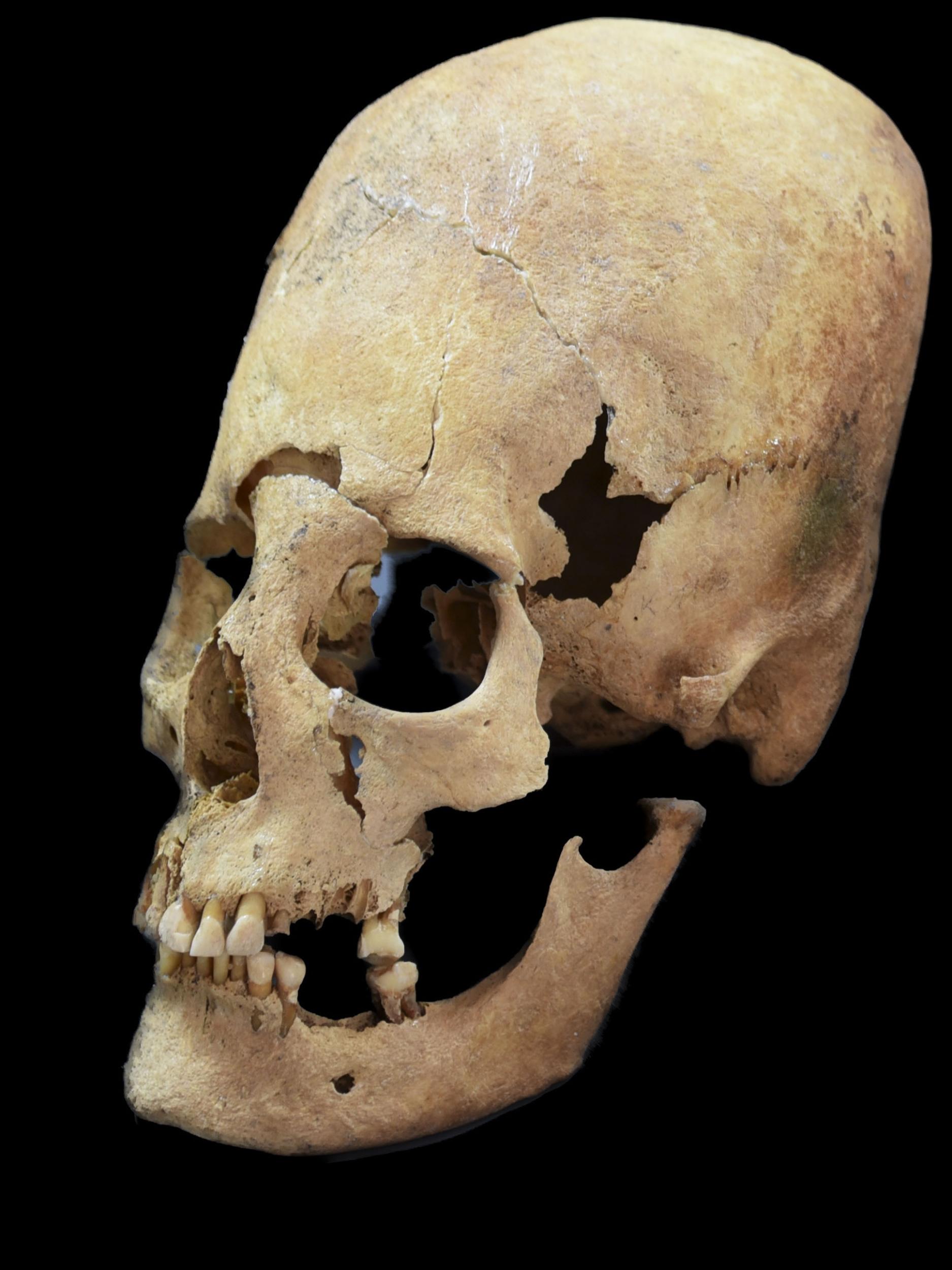Deformed skulls from Dark Age site show women were pioneers of Europe, not just men
Artificially-elongated heads discovered in Bavaria indicate high-class females travelled long distances on their own

Your support helps us to tell the story
From reproductive rights to climate change to Big Tech, The Independent is on the ground when the story is developing. Whether it's investigating the financials of Elon Musk's pro-Trump PAC or producing our latest documentary, 'The A Word', which shines a light on the American women fighting for reproductive rights, we know how important it is to parse out the facts from the messaging.
At such a critical moment in US history, we need reporters on the ground. Your donation allows us to keep sending journalists to speak to both sides of the story.
The Independent is trusted by Americans across the entire political spectrum. And unlike many other quality news outlets, we choose not to lock Americans out of our reporting and analysis with paywalls. We believe quality journalism should be available to everyone, paid for by those who can afford it.
Your support makes all the difference.Women were pioneers of medieval Europe, travelling vast distances across the continent, a new study has found.
Scientists tracing migratory patterns have found unusually tall female skulls – a consequence of childhood head-binding – in Germany.
A genetic analysis, published in the Proceedings of the National Academy of Sciences, showed the women travelled from what is now Romania, Bulgaria and northern Greece at a time when the continent was being reshaped by the collapse of the Roman Empire.
Population researchers associate long distances with male members of the elite, while females typically travel shorter distances.
But the new findings suggest women could have migrated on their own as part of a strategy to form new alliances.
The study said the women’s elongated heads suggested they may have been upper-class.

“These women looked extremely different to the local women, very exotic, if you will,” said one of the researchers, Joachim Burger, a population geneticist at the University of Mainz, Germany.
Working with colleagues from Europe and the US, Mr Burger compared the genetic profile of almost 40 human remains unearthed from 5th and 6th century burial sites in Bavaria.
They expected to find signs of centuries of Roman presence in the area — soldiers from the Mediterranean leaving their genetic mark on the location population.
Instead, they found the population looked “very central or northern European — blonde and fair-skinned, like modern-day Scandinavians,” Mr Burger said.
The exception was a group of deformed skulls. Known from various cultures across the world, artificially elongated skulls may have been considered a form of beauty or denoted high status because of the effort required to bandage a child’s head, said Mr Burger.
“This is a sound study with quite interesting results,” said Jean-Jacques Hublin of the Max Planck Institute for Evolutionary Anthropology in Leipzig, Germany. Hublin did not have any role in the research.
“Usually large-distance movements involve more males — explorers, soldiers, political elite — and short range movements are more common for females, spouses moving to their husband’s family,” Mr Hublin said.
It is unclear why the women — apparently without men — travelled such a long distance, but the study’s authors speculate that they may have represented strategic alliances between distant populations across Europe.
“They must have come on purpose,” said Mr Burger. “It’s not a single case, there are quite a few of them.”
Despite their foreign origins, the women integrated into Bavarian society, according to the researchers. They wore the same clothes as the locals and were buried with the same artefacts. Burger said further research is needed to see whether the women intermarried with the local population.
Additional reporting by Associated Press
Join our commenting forum
Join thought-provoking conversations, follow other Independent readers and see their replies
Comments